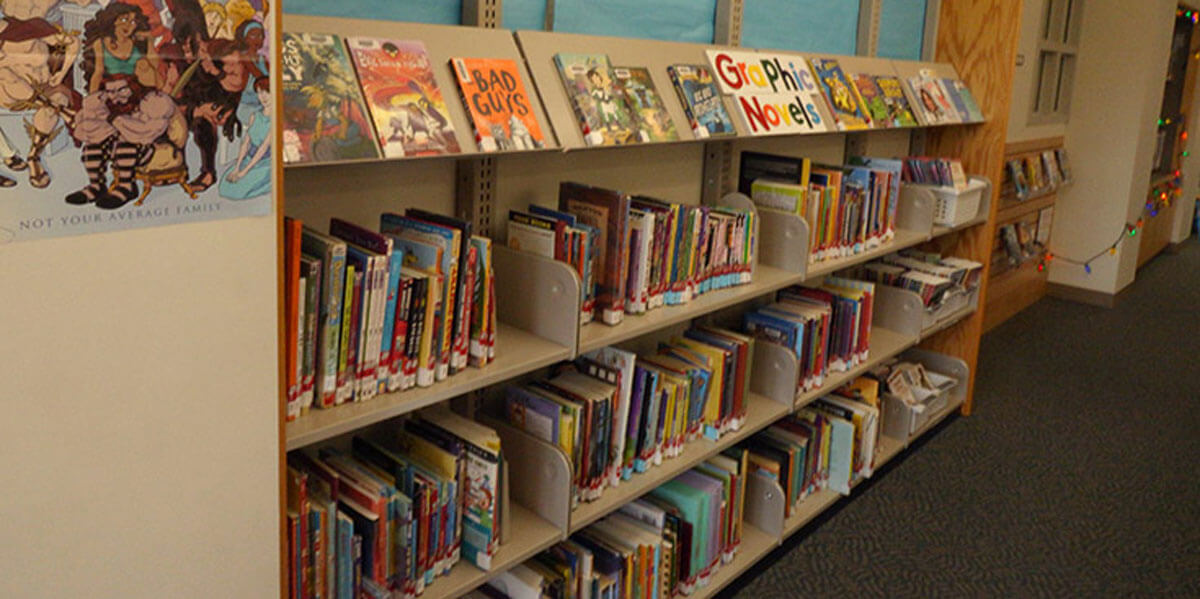While snow is still on the agenda for the next several weeks, I can’t help but look ahead to my garden in the spring. Last fall, my mom and I planted Stargazer lily bulbs, one of my grandmother’s favorite flowers, and I can’t wait to see them bloom. Just like watching a flower bloom, it’s a wonderful feeling to unpack a box of new books, see the covers, read the inside flaps, admire the illustrations, and think ahead to students who might enjoy each title. Our library is a garden, and like a garden, the needs (and seeds) of the collection change through the seasons and over the years.
In the world of library science, maintaining the library holdings is called “collection development.” The process ensures that a library collection has materials that are current, in good condition, and are relevant to the needs of the institution and community. Here at Colorado Academy our libraries aim to fulfill curriculum needs and offer independent reading options that students and faculty are excited about. To regularly add to the collection, we also need to regularly remove items from the collection that don’t work for us anymore. So, like any garden, the library requires weeding.
Weeding my flower and vegetable gardens can be a chore. Weeding the library collection, however, is something I like very much! It’s a process that over time can be very rewarding, knowing that we are cultivating a garden of books (and readers) to thrive—in the literary sense.
Time to weed

Here are some of the questions that we librarians ask as we handle the collection, one book at a time, for weeding:
What is the physical condition of the book?
When was the book added to the collection, and how often has the book circulated?
What do the professional reviews say about the book?
What is the topic or genre of the book?
Is this a subject that students are learning about in class or reading about for fun?
Is this a genre or an author that’s popular or used to be popular?
Is this a genre or author that students are reading and learning about in class?
Are the text and illustrations dated?
Is the topic handled in an appropriate way for our school curriculum and school mission?
Are there recently published books that better address the topic?
Are there recently published books that are more representative of our community and our times?
Depending on the answers to these questions, we may decide to keep the book, replace the book with a brand-new copy, or remove the book from the collection. These decisions can require research and conversation with colleagues. In my garden, I don’t have to think much about pulling out the bindweed that’s choking my coneflowers. In the library, however, I think deeply about many titles, some by well- known children’s book creators.
For example, the work of Dr. Seuss. It was hard to miss the recent news stories that six of Dr. Seuss’s older books were put in “out of print” status by their publisher, Dr. Seuss Enterprises. (Of note is that none of the six Seuss books are banned, but they will no longer be printed by the publisher.) Knowing that we had weeded some Dr. Seuss books over the past several years, I searched the LS Library Catalog for all titles by or about Dr. Seuss. I found 39 listed in the collection. Of the six “out of print” titles, only one remains (which we will evaluate according to the process described above). Children’s books go “out of print” all the time, for many of the same reasons that we regularly weed the library collection. Gardens evolve and grow and change over time.
When weeds in my yard get big, they cast shade on plants that only thrive in the sun, like my Stargazer lilies. They need to be removed from the garden to allow other plants to prosper and grow. Books that used to fit the library collection and the school community are much the same; when they are no longer as loved, relevant, or as popular as they once were, they need to be removed to make room, so that new titles can take root and flourish.
